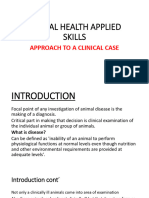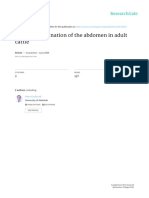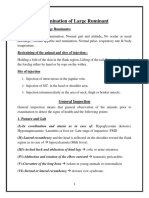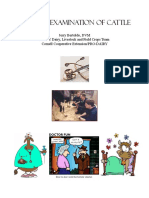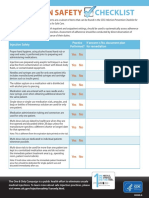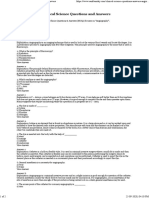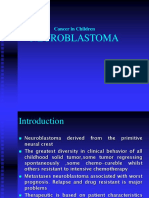0% found this document useful (0 votes)
227 views10 pagesCattle Clinical Exam Guide
The document outlines the steps for clinically examining cattle, including taking a history, observing the animal, performing a physical exam of vital signs and body systems, conducting additional tests if needed, documenting findings, and developing a treatment plan. The physical exam involves assessing temperature, pulse, respiration, mucous membranes, hydration, and body condition score.
Uploaded by
Muhammad ZubairCopyright
© © All Rights Reserved
We take content rights seriously. If you suspect this is your content, claim it here.
Available Formats
Download as PPTX, PDF, TXT or read online on Scribd
0% found this document useful (0 votes)
227 views10 pagesCattle Clinical Exam Guide
The document outlines the steps for clinically examining cattle, including taking a history, observing the animal, performing a physical exam of vital signs and body systems, conducting additional tests if needed, documenting findings, and developing a treatment plan. The physical exam involves assessing temperature, pulse, respiration, mucous membranes, hydration, and body condition score.
Uploaded by
Muhammad ZubairCopyright
© © All Rights Reserved
We take content rights seriously. If you suspect this is your content, claim it here.
Available Formats
Download as PPTX, PDF, TXT or read online on Scribd
/ 10



